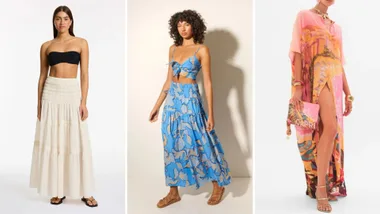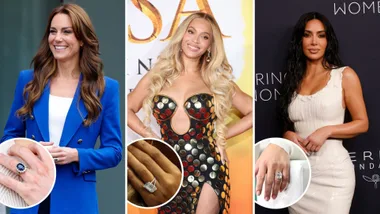Vogue has caused controversy again for publishing “blackface” pictures of a white model.
This time it’s the Netherlands edition of the fashion bible that is in hot water after it ran an editorial featuring pale-skinned model Querelle Jansen with her face “blacked-up” and an afro wig on.
The photographic spread — which was styled by Marije Goekoop and photographed by Ishi — was intended to pay tribute to designer Marc Jacobs’ autumn 2008 and spring 2009 collections for Louis Vuitton, which were inspired by black fashion icons Grace Jones and Josephine Baker.
Instead of hiring a black model, the magazine chose to paint Jansen’s face black and use an afro wig, outraging fashion bloggers around the world.
“A couple of alternative ideas: use a model who already looks something like Grace Jones or Josephine Baker without face paint,” Dhani Mau wrote on Fashionista.
“Or just, you know, don’t paint a white person’s face black ever? Why is this even something we have to keep pointing out? European editors and stylists especially, it seems, are really not getting it.”
Jezebel writer Jenna Sauers added: “It’s particularly troubling that blackface persists in a fashion industry that continues to display an overwhelming preference for white models.
“Models of colour — even successful ones — often face discrimination on the basis of their race. Black models are told by clients that they won’t be hired because they ‘already have’ a black model, black models talk about encountering makeup artists and hair stylists who refuse to work with them, and black models say they have a harder time breaking into an industry that accords them fewer opportunities than white models.
“Models of colour are also sometimes paid less than their white counterparts. It’s not possible to argue that, all things being equal, blackface — despite its painful history in, particularly, the US and Europe — could be an appropriate aesthetic reference for a fashion magazine or brand. Because for models of colour working today, things are not equal.”
It’s not the first time Vogue has caused controversy by using a “blacked-up” model.
In 2009, the Paris edition photographed Dutch supermodel Lara Stone in black body and face paint and the idea has since been copied by several other titles including France’s Numero magazine, which painted 16-year-old white model Ondria Hardin for its “African Queen” special in February.

Ondria Hardin © Numero magazine.

Blackface make-up first became popular in the US in the 1830s, before spreading to the UK and Europe. White performers in minstrel and vaudeville shows would blacken their faces and don wigs and ragged clothes to act out various black stereotypes.
The stock caricatures made famous in blackface shows are blamed for cementing and proliferating racist attitudes that still pervade society today.











